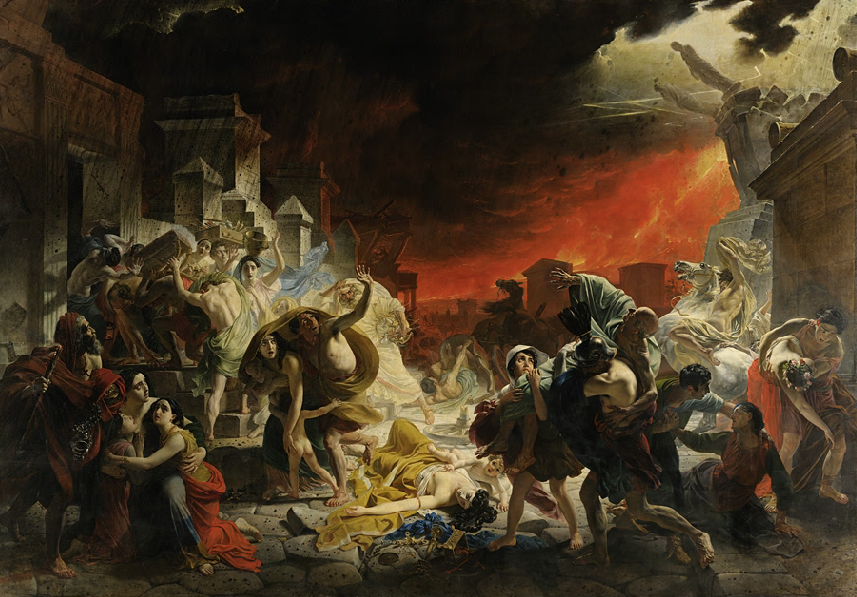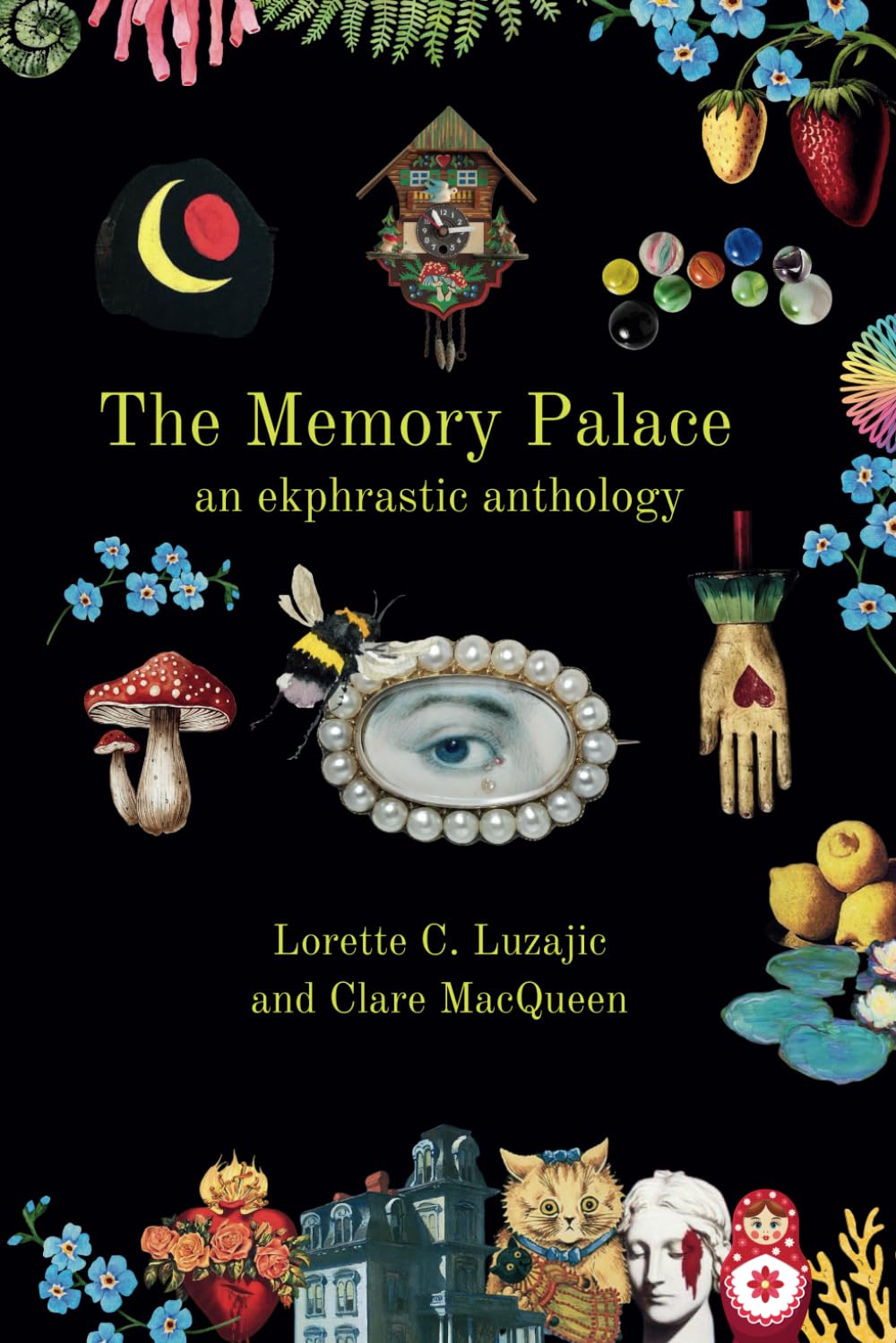|
A New Reckoning with the Sublime 1. To love a painting that depicts suffering in such immaculate light is perhaps a sign of sadism—or at the very least, of bad taste. And yet, it is this painting that I seek out in the State Russian Museum in St. Petersburg. I’m 20 when I finally see it in person. I nearly run past the other works in the halls, spurred on by the thought that I will at last stand before the great eruption as it stretches some 21 feet across the wall. The ‘flaming colossus’ as the Italian painter Vincenzo Camuccini called it, depicts—as its title promises—the last day of Pompeii. There is something feverishly dream-like about the painting. The oranges glow more orange, and the dark ash of the clouds seems impossibly black. The size of the thing alone makes it jump out from the wall—it consumes the viewer’s visual range. The Last Day at Pompeii is nearly grotesque in its romanticism. I mean this both in the sense of style (dramatic shadows and idealized forms) but also in the true meaning of the word ‘romantic;’ in Bryullov’s strokes, the pain of Pompeii’s eruption is extravagant and enchanting. You could fall in love gazing into the subjects’ faces, their mouths agape in expressions that connote less horror than awe or orgasmic pleasure at such a horrendous fate. 2. Fire, fire, fire. Heat, heat, heat. Why must the climate apocalypse be so hot!? Today, I am listening to a song by the band Pinegrove called ‘Orange.’ It was written in response to photos of the 2020 wildfires that painted Oregon’s skies orange. I try to laugh or sleep it off, lead singer Evan Stephens Hall’s voice spills into my ears from my headphones as I scan Google images. The reflection of the bright orange light from my computer screen plays off the lenses of my glasses. Today the sky is orange/and you and I know why. I can’t help but marvel at the colour—how something so devastating could be so glaringly bright, so garishly brilliant. 3. At 18, I’m sitting inside a windowed office while I read Edmund Burke's A Philosophical Enquiry into the Origin of Our Ideas of the Sublime and Beautiful. Outside, the rain is falling heavy. We’re having one of those Oklahoma summer thunderstorms, the kind that sends life into limbo and makes the whole world feel like it’s spinning off-kilter. I am reading Burke for an online class. I am preparing for our virtual discussion of the presence of the natural world in the American imagination while my window is splattered with waves of summer rain. At the core of Burke’s Inquiry, is a separation of the beautiful and the sublime. The beautiful is a matter of aesthetics and delicacy, whereas the sublime has more to do with power. The sublime in nature is noted by its ability to destroy; it stirs fear in the viewer. But I seem always in my memory to collapse the two. The beautiful compliments the sublime. That which is powerful, that which humbles, is also beautiful perhaps because of the fear it strikes in me. From the safety of my windowed office, the thunderstorm inspires fear, but a manageable kind, moderated as it is by the glass and steel and cinderblocks that keep me separate from the object of my fear. So it is that when I see a painting of devastation wrought by nature’s mighty hand I feel both fear and appreciation of beauty. Perhaps it is only when nature’s awesome power is frozen by paint and canvas that I can see the sublime as beautiful. 4. In Bryullov’s eyes maybe there is something beautiful about surrendering oneself to the nearly (okay, completely) divine wrath of nature. I fell in love with Bryullov’s painting around the same time I became conscious that climate change would penetrate every aspect of life for my generation in the coming years. In fact, as I write this, Pakistan is recovering from biblical floods; the American west is suffering drought; and Puerto Rico is struggling to stay relevant in the ever-changing news cycle as Hurricane Ian touches down in Florida where my grandparents live. I called them in anticipation of the storm. My grandmother said they planned to stay in their home with metal shudders over all their windows. She joked morbidly that should anything happen, I am to: “remember them as they used to be.” On the night that Ian knocked out the power in their area, I imagined my grandmother and grandfather taking shelter beneath a toga like two of Bryullov’s figures. As if cloth could keep out lava. Perhaps I love Bryullov because he could make fear beautiful—because he could make devastation romantic—because I feel safe in a gallery staring in awe at someone else's suffering with my hands clasped tight behind my back. Elizabeth J. Wenger Elizabeth J. Wenger is a writer from Oklahoma. She is currently an MFA Candidate at Iowa State University's program in Creative Writing and Environment. She has been published in essaydaily.org, Flash Fiction Magazine, and The Hopper. Her essay "Cutting A Tree" was recently nominated for Best of the Web.
0 Comments
Your comment will be posted after it is approved.
Leave a Reply. |
The Ekphrastic Review
COOKIES/PRIVACY
This site uses cookies to deliver your best navigation experience this time and next. Continuing here means you consent to cookies. Thank you. Join us on Facebook:
July 2024
|




